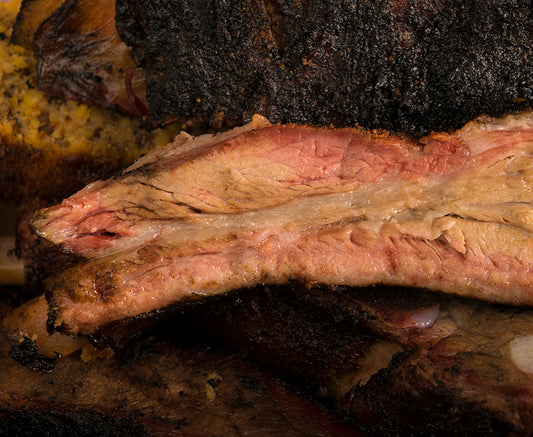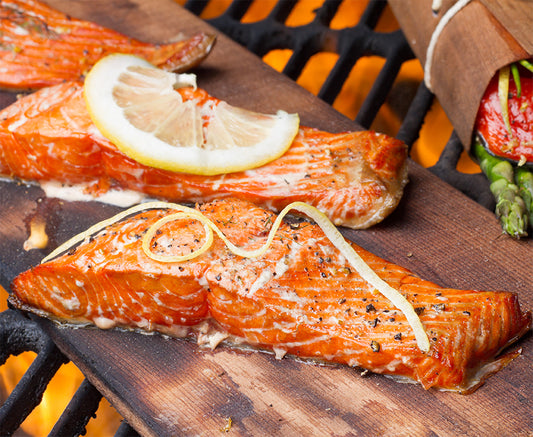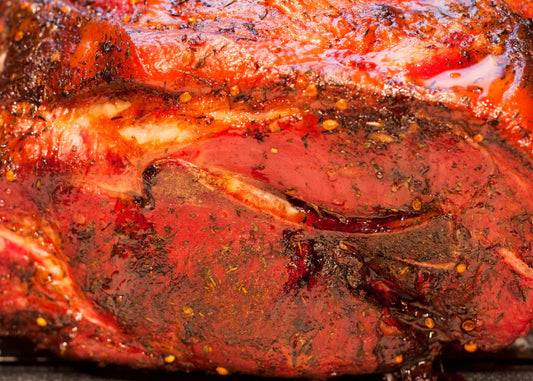Choosing the right cut of meat for your barbecue can be overwhelming. There are simply too many options to choose from. If you want the highest-quality steaks, two cuts that fly off the grill, and most dinner tables are ribeyes and filet mignon.
So, what’s the difference between these two cuts of beef?
Ribeye Steak
If you are looking for the tastiest cut of beef, you will want to buy ribeye steak. The ribeye steak is a cut above the rest because of its intense flavor and tenderness.
As its name suggests, the ribeye is a cut that comes from the cow’s rib section. This cut lays between an animal’s shoulders and loin. Though somewhat similar to sirloin, the cut is fairly tender but with more marbling and fat. The marbling helps provide an extra tender and juicy piece of meat known for its rich flavor.
It gets its name from its appearance, which sometimes contains fat and a distinctive swirl of meat on the inside of the steak. Ribeyes and prime rib roast come from the same location, but the former is sliced instead of being cooked whole.
When sliced thinly against the grain, ribeye is one of the most tender cuts of beef. For such a lean cut of meat, it is surprisingly flavorful and rich in fats that offer wonderful flavor without adding much weight.
There are different cuts of ribeye: bone-in and boneless. The cut is generally sold dry and will benefit from a moist cooking method.
Filet Mignon Steak
While the ribeye takes the prize for flavor, the filet mignon is the most tender cut of beef. The name “filet mignon” is French and loosely translates to “dainty thick slice.”
The filet mignon is cut from the tenderloin. The tenderloin is the meat located at the back of the animal, below the loin, which is the section of meat on the inside of the ribcage. With a beef rib, the tenderloin is found in the last section of meat.
A filet mignon is cut from the larger portion of the loin behind the rib cage. The tenderloin gets little movement in an animal because it is not weight-bearing tissue. It, therefore, has less connective tissue, hence its tenderness. The best filet mignon cut comes from the center of the tenderloin, which is the softest.
The tissue has small strips of fat running through it. It also contains less marbling than most cuts, making its flavor milder in comparison.
Major Differences
The biggest difference between the two types of steak is where they come from. However, we can go further and differentiate them through flavor, texture, size, and even cost.
Flavor
The ribeye has more flavor than the filet mignon. If you are looking for a hearty beef flavor, go for the former. In addition to a less pronounced taste, the filet mignon has less fat and is generally less greasy than the ribeye.
Another factor you could consider here is the accompaniments for your dish. The strong beef flavor in the ribeye can overpower many ingredients.
Texture
Both cuts of beef are naturally tender. However, the filet mignon has a softer texture than the ribeye. As stated earlier, this has more to do with the location of the cuts and the absence/presence of connective tissue—the more the tissue, the tougher the cut. In our case, the tenderloin, where the filet mignon comes from, has less tissue and is, therefore, more tender.
Appearance & Size
Filet mignons are usually smaller than ribeyes. The filet mignon is usually about 1 inch thick and 6–8 inches long. The muscle it comes from is tube-shaped, so they appear round in shape when they are cut. Ribeye steaks, on the other hand, are more generously cut.
The appearance of the two steaks is also significantly different. You will see fewer streaks of fat sprinkled in a filet mignon compared to a ribeye. The ribeye has large swaths of fat inside the steak as well as around the edges. Additionally, the filet mignon appears smoother, which is explained by the lack of connective tissue. The ribeye has a tougher surface.
Cost
While both tend to cost more than other cuts of meat, the filet mignon is considerably more expensive than the ribeye. The tenderness of the cut and its scarcity may explain why.

Which Cut Is Best for Smoking?
Different people have different tastes. However, the natural texture of the cut will also play a part in the cooking time of your meat. The tougher ribeye will generally take longer than the filet mignon on the smoker. If you are looking for the best flavor, go for the ribeye. If the texture is your first consideration, go for a filet mignon.
Check out a few more steak articles here:
5 Steak Doneness Internal Temperatures & Times
The Way You Should Be Tenderizing Steak
How to Cook the Perfect New York Strip Steak
For more great ideas on how to get the most out of your Bradley Smoker, check out the awesome articles on our Bradley Smoker Food Smoking Blog for more tips & tricks.







